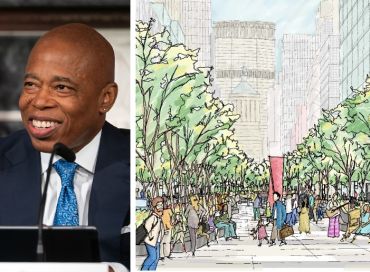Calif. Holds Property Tax Protections for Commercial Real Estate
Proposition to overturn defeated by less than 52 percent of the vote
By Greg Cornfield November 5, 2020 3:50 pm
reprints
California will maintain its limit on annual property tax increases for commercial properties after about 51.7 percent of voters rejected the changes involved in the “split-roll” ballot measure.
Proposition 15 would have amended existing rules so that commercial and industrial property taxes for real estate worth more than $3 million would be assessed on a regular basis and at their market value, rather than at the time of the latest sale. They are currently taxed at 1 percent of a property’s assessed value at the time it’s acquired, plus the rate of inflation, and existing laws don’t allow changes to the assessed value until the property changes hands.
The measure, called the California Schools and Local Community Funding Act of 2020, was set to eliminate rules on property taxes established from the famous Proposition 13 from 42 years ago. Currently, buildings that have maintained ownership since 1980, for example, are still taxed at the same value they were assessed at that year.
Fundraising from both sides reached $139.24 million, the Los Angeles Times reported earlier this week. Opposition included almost $39 million from the California Business Roundtable — which was backed by Kilroy Realty and Blackstone (BX) Group — the California Business Properties Association, and other developers like Boston Properties (BXP), which directly infused $1.5 million into the effort against Prop 15.
The additional tax revenue would have been a boon for schools, as well as police, fire and emergency responders, by raising an estimated $7.5 billion to $12.5 billion per year, according to the Legislative Analyst’s Office. But opponents argued small businesses and their employees would be the hardest hit, and the increased tax burden would be passed down from landlords to tenants and potentially consumers.
They also argued that it wouldn’t reach its intended goal. Mike Tingus with Lee & Associates told Commercial Observer that proponents were hoping to raise money to address massive shortfalls in public education, but that these gaps are so large that the estimated $4 billion they would have received from Prop. 15’s implementation would have been a “drop in the bucket.”
“It’s not the cure,” he said. “It’s not even a Band-Aid.”
He said in the last month before the election he started to hear from an increasing number of clients and users of space against the proposition.
“If you’re an investor, and you’ve owned your building for 20 or 30 years, and you’re a good steward of your real estate, you’d basically be penalized for not being a dealer and a merchant type of builder,” Tingus said. “It’s the wrong way to go about raising money for schools. … To go after a select type of real estate, to basically subsidize less than 20 percent of the annual amount needed to address the current shortfall in schools, it doesn’t fly.”


